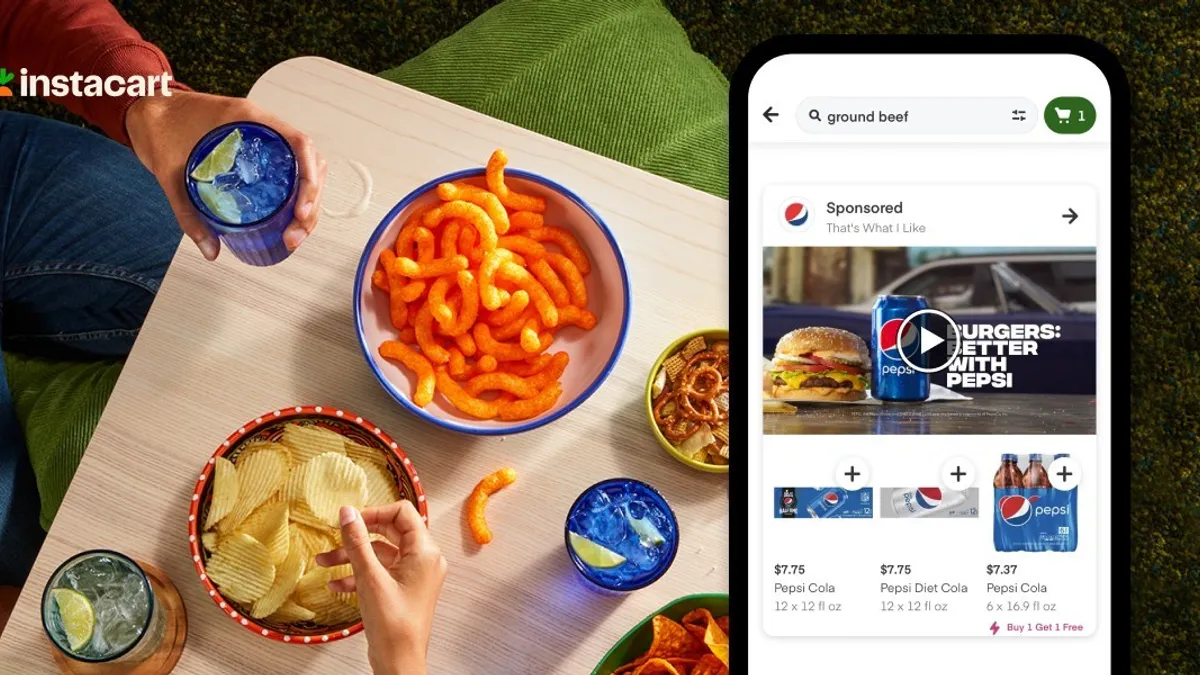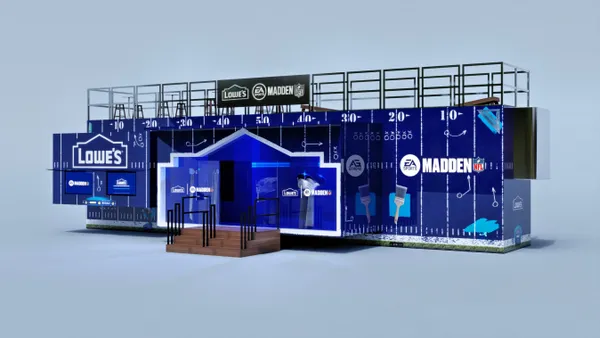Dive Brief:
- Instacart is expanding its ad product suite with new shoppable video and display units, according to a blog post by the grocery delivery platform.
- Unilever’s Dove, Mondelēz International, PepsiCo and S.Pellegrino are among the early partners. Shoppable videos, which will be available as a self-service option in Instacart’s Ads Manager portal later this year, integrate a sponsored video into the feed with a carousel of relevant products to purchase. In an example highlighted in the announcement, a query for “ground beef” surfaces a Pepsi campaign about how its sodas pair better with burgers, with the option to shop various beverages underneath.
- The shoppable display format appears similar, but with a static image in lieu of a video. More than 40 brands have tested the commerce-oriented display ads, and Instacart plans to make them widely available this summer. The news suggests how retail media networks are pushing to develop more sophisticated ad formats as the market gets saturated and scoring larger budgets becomes a bigger mandate.
Dive Insight:
Instacart’s new ad products attempt to remove some friction for CPG brands and spur users to increase their basket size while browsing the app. Consumers are already on the platform to buy groceries and other goods and may be receptive to targeted messages that let them pick up complementary products at the click of a button. For brands, video capabilities open creative and storytelling opportunities, though the tech remains in a “test and learn” phase, per Instacart.
The offerings could also be a way for marketing partners to gain more exposure with a digitally savvy audience. PepsiCo, for instance, has employed shoppable display ads to drive first-time purchases on Instacart, the announcement says.
Retail media campaigns have typically centered on placements like sponsored product listings, native ads and display. But video and shoppable concepts have entered the picture as the focus shifts to premium, media-rich units. Sharing its retail media roadmap for the year in March, Walmart said it would start testing on-site video ads, along with building new ad formats designed for connected TV and video.
Layering in a commerce element is clearly appealing to marketers, as Instacart has sign-on from blue-chip names including Unilever, Mondelēz and PepsiCo. The company began running paid search campaigns back in 2019 and has steadily rounded out its ad suite since. In March, it launched an Instacart Platform that includes tools to help other retailers prop up media networks.
However, the grocery delivery boom that powered Instacart to new heights earlier in the pandemic has cooled, meaning the platform needs to hash out fresh ways of driving revenue. Instacart recently cut its valuation nearly 40%, per CNN. It confidentially filed to go public earlier in May.















